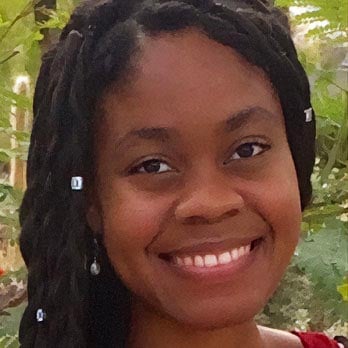Black and Hispanic people in underserved communities have been hard-hit by COVID-19, yet they are less likely to get vaccinated than others. To change that, patient engagement videos must address concerns and inequities head-on.
When promoting COVID-19 vaccination, one size does not fit all
We started planning the COVID-19 vaccines patient engagement video more than a year ago, months before emergency use authorizations were granted. Misinformation was, and still is, rampant in our pandemic world. This combined with the reckoning that the U.S. is going through with their present and past history of racism made us even more thoughtful about how this video needed to be designed, how it was going to be written, presented and visualized.
Know your audience
We know some people don't believe in the efficacy of vaccines, and we were clear from the beginning that we would not go after that audience. We chose to talk to people who are hesitant about vaccination and the healthcare system in general.
That's why, for the first time I believe, we added a bioethicist to our carefully selected medical and patient advisory group. We also made sure our medical and patient experts came from all regions of the U.S., not just the East and West coasts.
Acknowledge realities in diverse communities
Black and Hispanic communities are more impacted by COVID-19 because they tend to have less access to quality healthcare. In addition, experiences of medical mistreatment incurred distrust of healthcare systems. To help disarm skeptics, our script acknowledged this and went through several iterations and read-throughs to hit the right note.
I remember a conversation we had during a read-through, when we were still trying to find the right words for a section on medical mistreatment. Someone suggested, "We understand your concerns about the vaccine." Hearing this, to me, is worse because it's like hearing someone say that "they understand the situation" but then continue to engage in the same way. They either don't care or don't really understand.
In my years producing patient videos and as a patient myself, I've rarely seen these issues directly addressed in the materials you get at doctors' offices or in your online patient portals. Often, it's a throwaway line like, "This population is more likely to get infected" but without context or surrounding language on how that changes the need – and options – of that population.
Speaking for myself and family members, and people I've spoken to who are also Black or Hispanic, it is important just to acknowledge that someone is having these concerns and that they exist. That's why on top of the latest evidence-based information on COVID-19 and the vaccines, we validated patients' concerns and feelings and offered suggestions on how they could get answers.
Look and sound like the people you're talking to
As always, our team of artists and creative UX/UI technologists was involved throughout the process so that they could sketch and plan the best visual experience possible. We also wanted a voice that sounded familiar to people in Black and Hispanic communities and families. After auditioning many Black and Hispanic talents, our production team – predominantly White – was divided.
To get more diverse input, we surveyed colleagues across Wolters Kluwer and especially those involved in the Diversity, Equity and Inclusion initiative. I also asked friends and family members which voice they preferred. And when the results came back, the top pick was one of the voices I had originally enjoyed as well.
This attention to detail may sound like a lot of work, and some may wonder, do we have the time to be so thorough in this pandemic?
Health messaging is moot if it is not effectively designed for the audience. The attention to detail in our work impacts how this messaging is received and acted upon. Like our colleagues at UpToDate® who adapted their rigorous editorial process to be more nimble and get reliable answers to clinicians on the frontlines fast, we accelerated our proven production process while leaving room for quick updates to meet the needs of patients and providers.
We focused on the essential: a video that would help start real conversations between patients and care teams and that, we believe, will prove essential in supporting COVID-19 vaccination efforts in communities that need it most.


